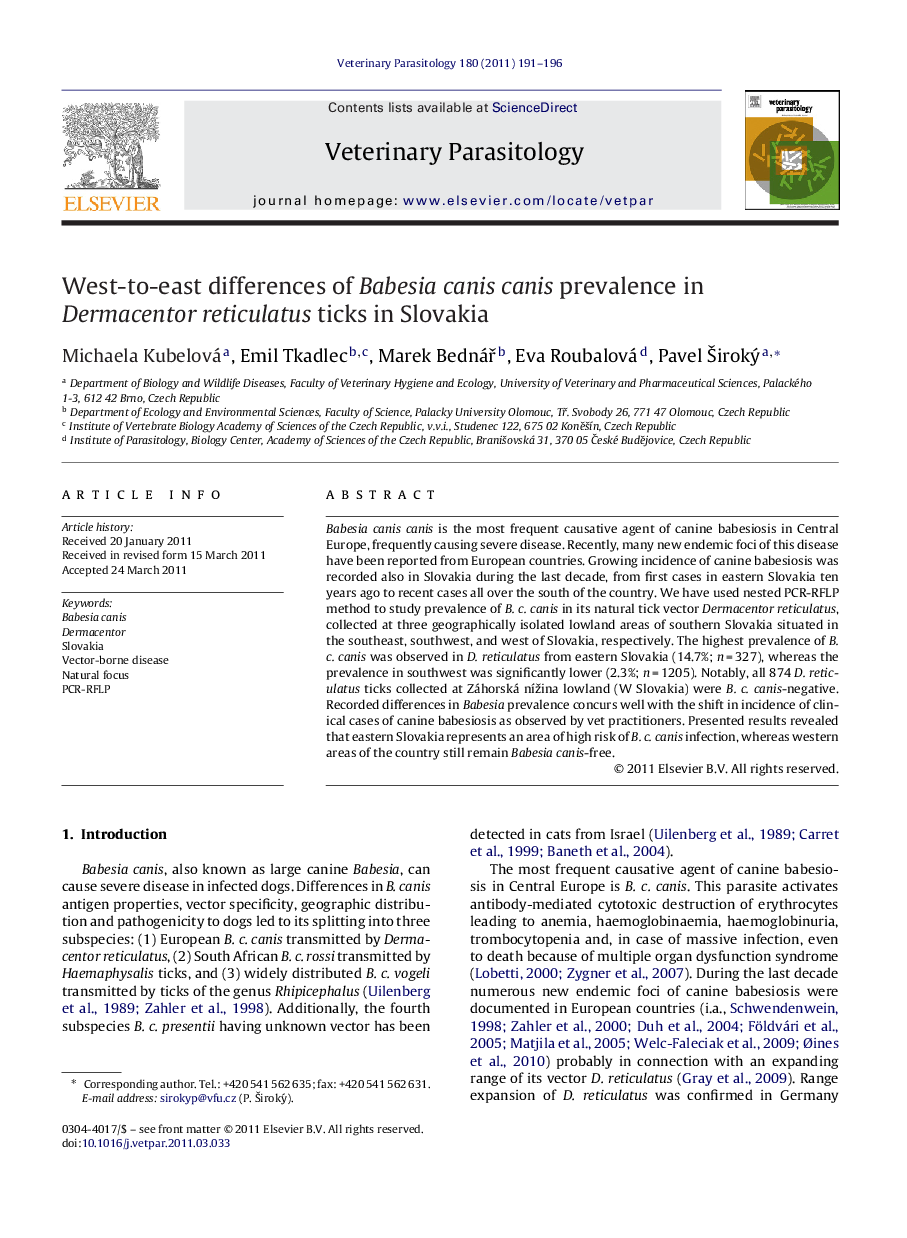| Article ID | Journal | Published Year | Pages | File Type |
|---|---|---|---|---|
| 5805700 | Veterinary Parasitology | 2011 | 6 Pages |
Babesia canis canis is the most frequent causative agent of canine babesiosis in Central Europe, frequently causing severe disease. Recently, many new endemic foci of this disease have been reported from European countries. Growing incidence of canine babesiosis was recorded also in Slovakia during the last decade, from first cases in eastern Slovakia ten years ago to recent cases all over the south of the country. We have used nested PCR-RFLP method to study prevalence of B. c. canis in its natural tick vector Dermacentor reticulatus, collected at three geographically isolated lowland areas of southern Slovakia situated in the southeast, southwest, and west of Slovakia, respectively. The highest prevalence of B. c. canis was observed in D. reticulatus from eastern Slovakia (14.7%; n = 327), whereas the prevalence in southwest was significantly lower (2.3%; n = 1205). Notably, all 874 D. reticulatus ticks collected at Záhorská nÞina lowland (W Slovakia) were B. c. canis-negative. Recorded differences in Babesia prevalence concurs well with the shift in incidence of clinical cases of canine babesiosis as observed by vet practitioners. Presented results revealed that eastern Slovakia represents an area of high risk of B. c. canis infection, whereas western areas of the country still remain Babesia canis-free.
